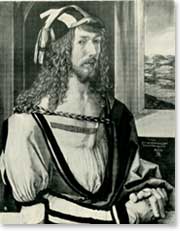 |
|
||||||||||||
|
|
 |
|
 |
|
 |
 |
|||||||
|
|
 |
|
 |
|
 |
|
|||||||
|
|
|
|
|
|
|
|
|
|
|
|
|
|
|

Five hundred years ago, a young German painter named Albrecht Dürer left his hometown of Nuremberg and started on a journey to Venice, a city at its peak of wealth and influence. Here he met with Luca Pacioli, famed mathematician and theorist of art, and he also got closely acquainted with the first printings of Euclid’s geometry and Vitruvius Pollio’s classical work on architecture.

On his return home, Dürer immersed himself in the study of the spatial representation of objects and specially the form, proportions and movements of the human body. His work “Hierinn sind begriffen vier bücher von menschlicher Proportion”, which was published in 1528, just after his death, became the first systematic application of mathematics to the problem of how to create an image of the human body and its movements.
Dürer’s study is one of the ninety-nine landmark publications that form the basis of an attempt made in this book to describe the historical progression of important contributions of science and technology to the field of medicine. In each case considered, a summary of the contents of a publication and a short presentation of the author are given. Then the significance of the discovery and its influence on later developments are outlined. Using references to subsequent key advances, the level of knowledge in the field is traced up to modern times. Although necessarily not exhaustive, it is hoped that this approach will highlight the evolution of many important results in science and technology that have played a direct and important role in the progress of medicine over the past five hundred years.
